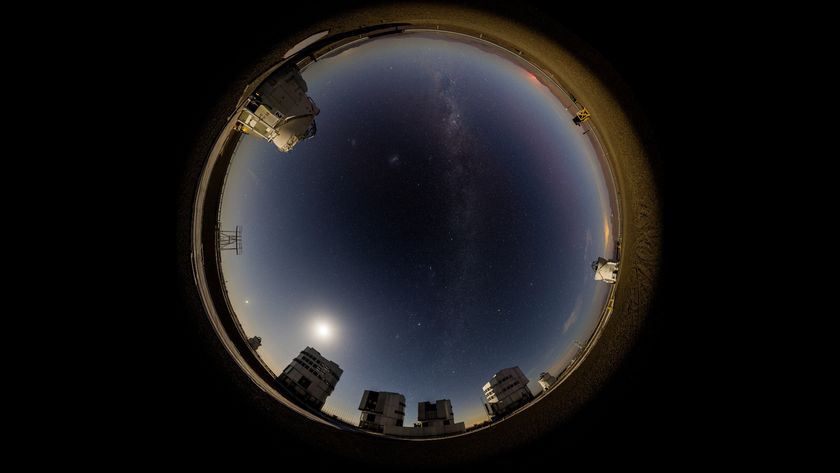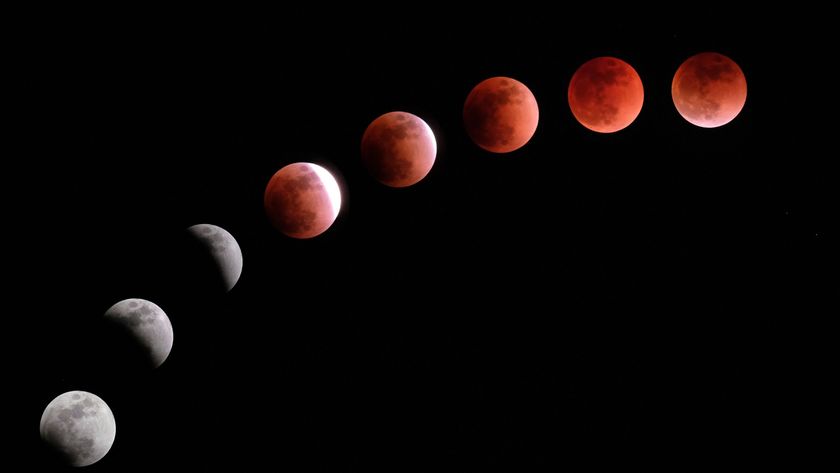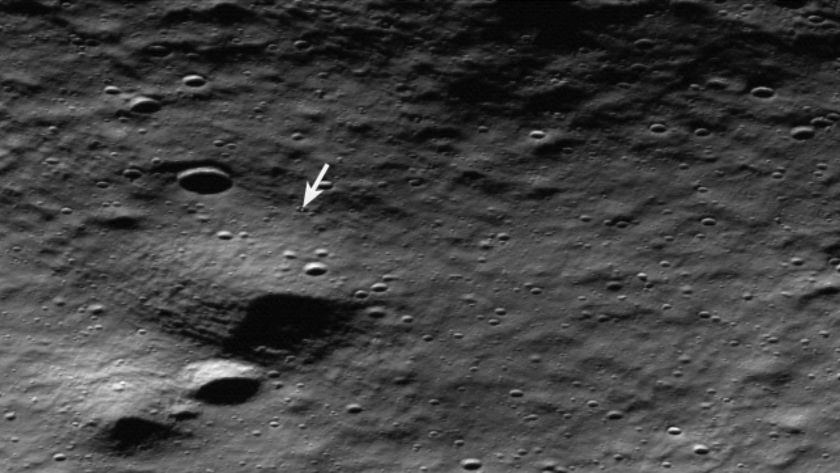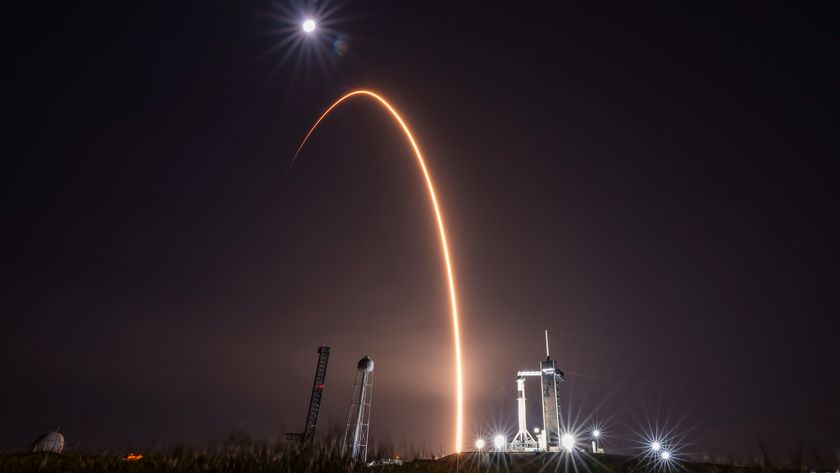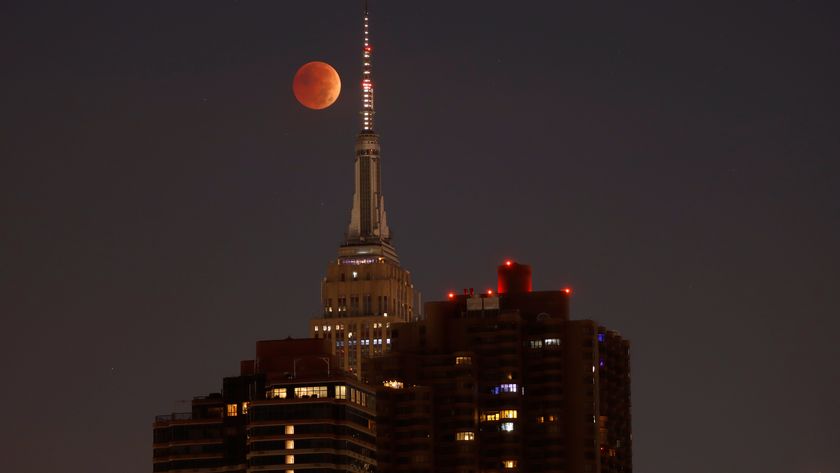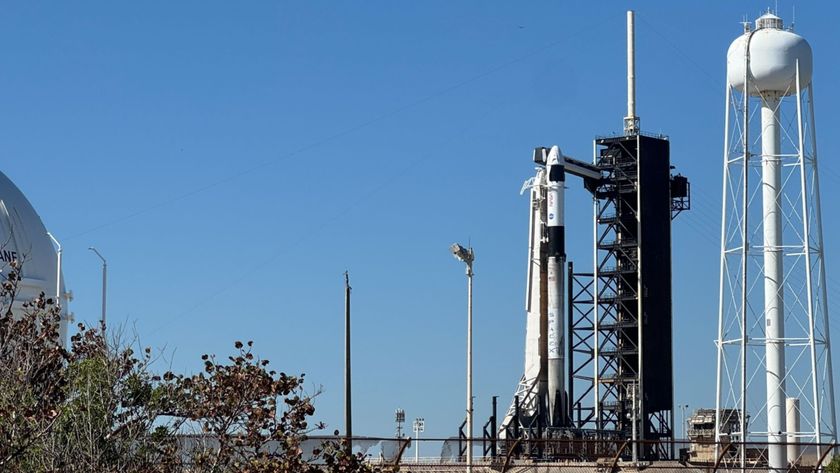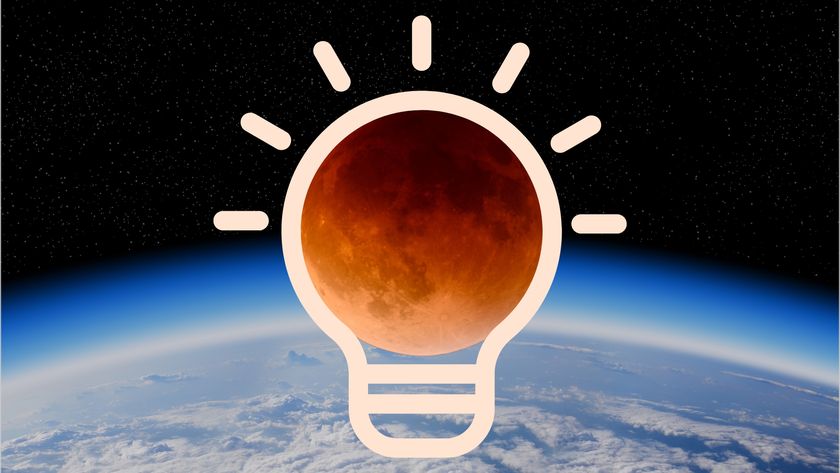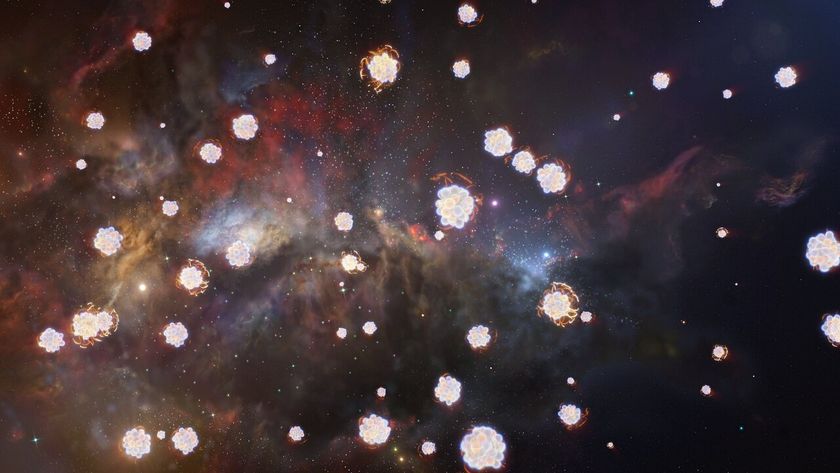'Supermoon' Science: NASA Explains the Closest Full Moon Until 2034
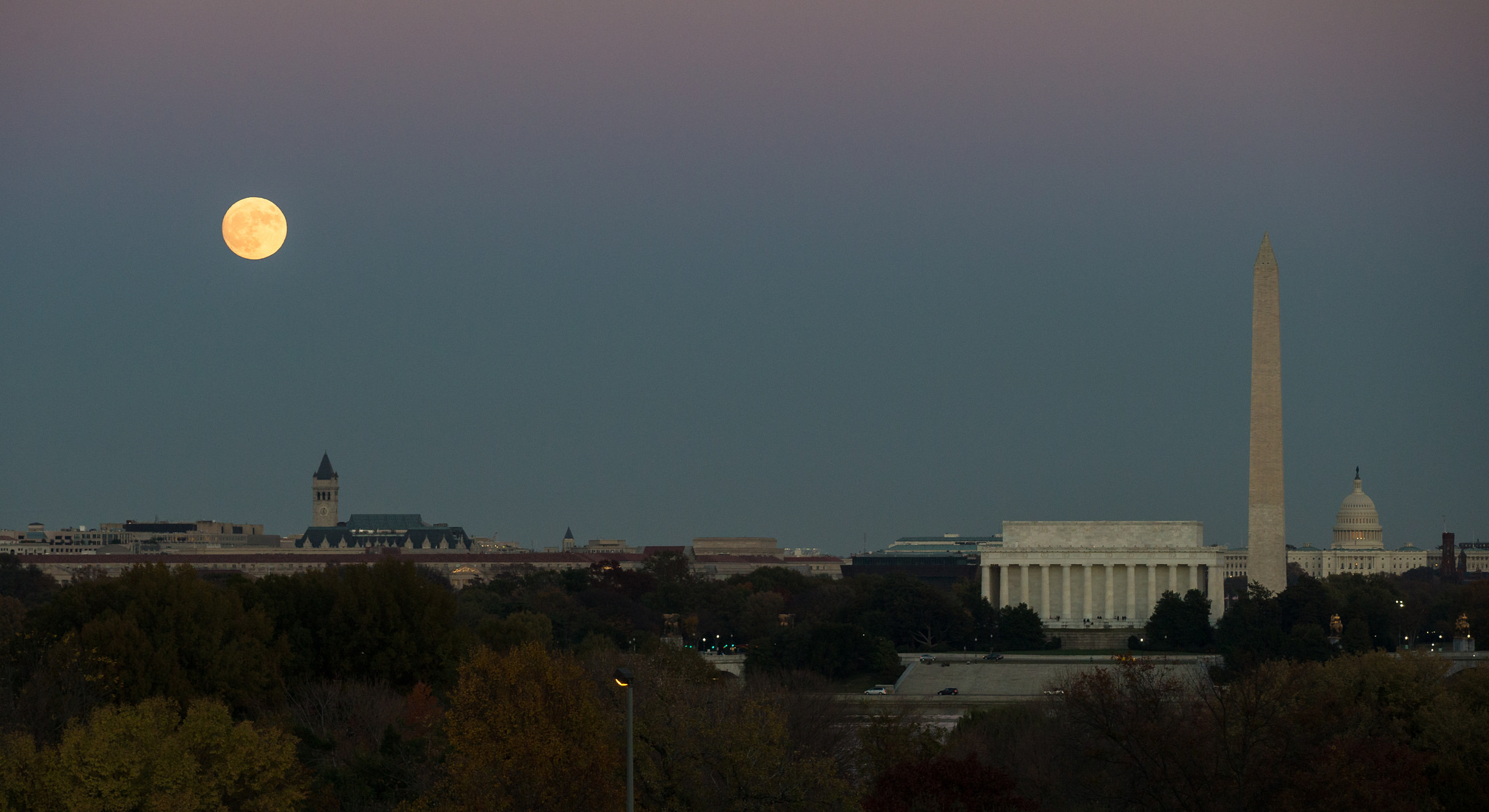
The November "supermoon" is extra close to Earth today (Nov. 14), providing an extraordinary sight for skywatchers — but exactly what makes this month's full moon so special?
November's supermoon —a term used to describe a full moon is at its perigee, or closest point to Earth during the lunar orbit — will be the biggest and brightest supermoon to rise in almost 69 years. In fact, the full moon won't come this close to Earth again until Nov. 25, 2034.
To help explain the science behind supermoons, and what makes the November supermoon particularly special, Space.com spoke with NASA's Noah Petro, deputy scientist of the Lunar Reconnaissance Orbiter mission. [Supermoon November 2016: When, Where & How to See It]

Changing Tides
By definition, a supermoon "is the one closest full moon of the year," Petro told Space.com. The distance between the moon and the Earth changes because the moon does not orbit in a perfect circle.
"The main reason why the orbit of the moon is not a perfect circle is that there are a lot of tidal, or gravitational, forces that are pulling on the moon," Petro explained, adding that the gravity of the Earth, sun and planets of our solar system all impact the orbit of the moon. "You have all of these different gravitational forces pulling and pushing on the moon, which gives us opportunities to have these close passes."

What's more, the surface of Earth is about 70 percent ocean, which not only affects the moon's orbital pattern, but in turn creates tidal variations on Earth. This year, slightly higher tides are expected in relation to the Nov. 14 supermoon, although this is nothing unusual for close full moon approaches, Petro said.
"One of the interesting things about the moon is that it's not only pulling on the Earth's oceans, it’s actually pulling on the Earth's crust," Petro said. "The Earth's crust — the land beneath our feet — actually deforms and responds to the moon" in a very subtle way.
Get the Space.com Newsletter
Breaking space news, the latest updates on rocket launches, skywatching events and more!
Supersized Moon
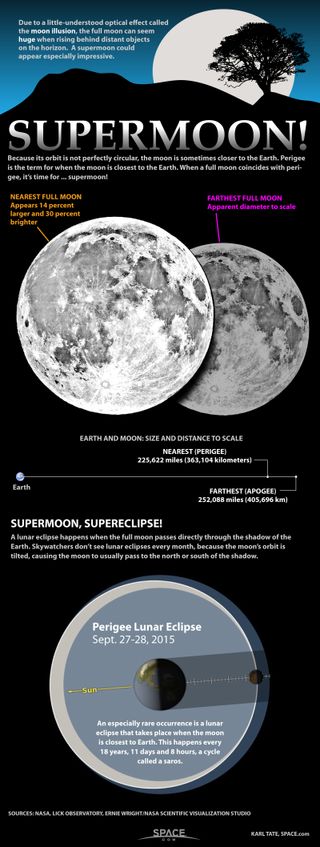
On average, the moon orbits approximately 238,855 miles (384,400 km) from Earth. When a full moon is at perigee, it orbits slightly closer, making it appear up to 14 percent bigger and 30 percent brighter in the sky. [7 Surprising Secrets About the Supermoon]
"We're not talking about dramatic shifts in distance, but were talking about subtle differences that are noticeable if you're used to looking at the moon," Petro said.
Tonight's supermoon will be approximately 221,524 miles (356,508 kilometers) from Earth. While this is the closest full moon to rise since Jan. 26, 1948, it is not the closest full moon approach on record.
In January of 1912, the full moon was "just under 100 kilometers closer than the full moon" tonight and the supermoon of November 2034 will be even closer, Petro said.
Rare Sight
The November supermoon reaches perigee this morning (Nov. 14) at 8:52 a.m. EST (1352 GMT). When the moon is this close to Earth, distinctive lunar surface features such as impact craters can be seen with the naked eye.
"I've been telling people to go out at night on either Sunday or Monday night to see the supermoon," Petro said in a statement from NASA. "The difference in distance from one night to the next will be very subtle, so if it's cloudy on Sunday, go out on Monday. Any time after sunset should be fine. Since the moon is full, it'll rise at nearly the same time as sunset, so I'd suggest that you head outside after sunset, or once it’s dark and the moon is a bit higher in the sky. You don’t have to stay up all night to see it, unless you really want to!”
Editor's note: If you snap an awesome photo of the moon that you'd like to share with Space.com and our news partners for a potential story or gallery, send images and comments to managing editor Tariq Malik at spacephotos@space.com.
Follow Samantha Mathewson @Sam_Ashley13. Follow us @Spacedotcom,Facebook and Google+. Original article on Space.com.
Join our Space Forums to keep talking space on the latest missions, night sky and more! And if you have a news tip, correction or comment, let us know at: community@space.com.

Samantha Mathewson joined Space.com as an intern in the summer of 2016. She received a B.A. in Journalism and Environmental Science at the University of New Haven, in Connecticut. Previously, her work has been published in Nature World News. When not writing or reading about science, Samantha enjoys traveling to new places and taking photos! You can follow her on Twitter @Sam_Ashley13.
